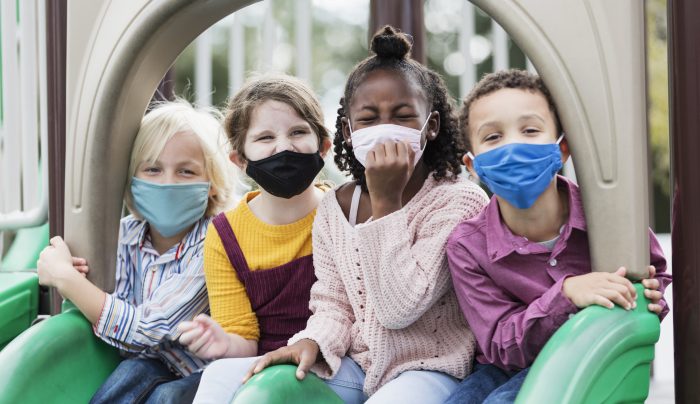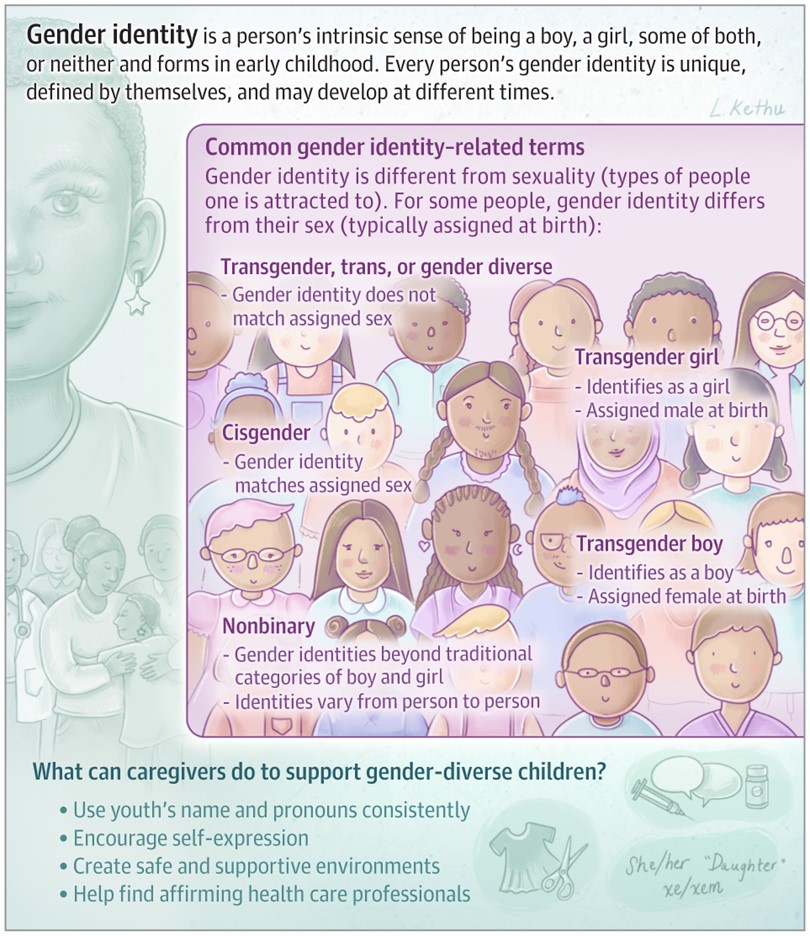
This week, JAMA Pediatrics published an article by Dr. Gina Sequeira, co-director of Seattle Children’s Gender Clinic, about gender identity. In the article, Sequeira discusses what gender identity is, explains gender related terms, and offers recommendations to caregivers to help them support gender-diverse children.
Gender identity is unique to each person and is used to describe a person’s internal sense of being male, female, some of both or neither, Sequeira says. Terms like transgender and gender-diverse, may be used to describe individuals whose gender identity differs from the sex they were assigned at birth. Recent estimates suggest as many as 10% of high school aged youth have a gender identity that differs from their sex assigned at birth.
Gender identity and terminology

“Studies suggest that the more spaces a young person is referred to using their name and pronouns, the better their mental health,” Sequeira said. “In my clinical practice, I’ve found that for many adults, starting conversations about gender can be difficult and feel uncomfortable, especially for those who may be less familiar with the terminology youth use. This was the impetus for the development of this resource, to try to give parents and caregivers a foundation for how to start having these important conversations with their kids.”
In the following section, Sequeira helps explain terminology and breaks down the many ways children may choose to identify. The below list is not all encompassing but provides a foundation for which people can begin to build awareness.
Transgender or gender-diverse describe people whose gender identity does not match their sex. Cisgender describes a person whose gender identity matches the sex they were given at birth, including male or female. If an individual identifies as a transgender, they may identify as a girl though they were assigned male at birth. People who identify as nonbinary identify beyond the traditional categories of boy or girl.
Supporting transgender or gender-diverse children
Sequeira believes it’s important to offer gender-diverse youth supportive and affirming environments. Youth who identify as gender-diverse experience mental health disparities, and so having conversations with youth about gender is an important way people can help them live healthy and fulfilling lives.
“Knowing how to provide support starts by having conversations with youth about gender,” Sequeira said. “By initiating these conversations, adults can show transgender and gender-diverse youth that they are there to help support them in whatever way they need.”
There are many ways caregivers can support children, including:
- Using youth’s name and pronouns consistently
- Encouraging self-expression
- Creating a safe and supportive environment
- Helping to find affirming health care professionals and access to care
According to Sequeira, one of the most important things a caregiver can do to support a child is to remind them they are loved. Also, let children take the lead when exploring gender identity. Parents can further support children by:
- Asking youth what pronouns and words to use when describing them – son, daughter, teen, etc.
- Asking if they need help creating supportive and affirming environments, especially outside of the home, like school or in health care settings
- Supporting children by affirming their physical appearance
Creating a safe and gender-affirming environment in the community is important for the health and wellbeing of children.
“My hope is that we continue to move toward a world where talking openly about gender with children occurs early and often, both in homes and in pediatric primary care,” Sequeira said.
Resources:
Bridging Barriers to Behavioral Health Care for LGBTQ+ Youth

